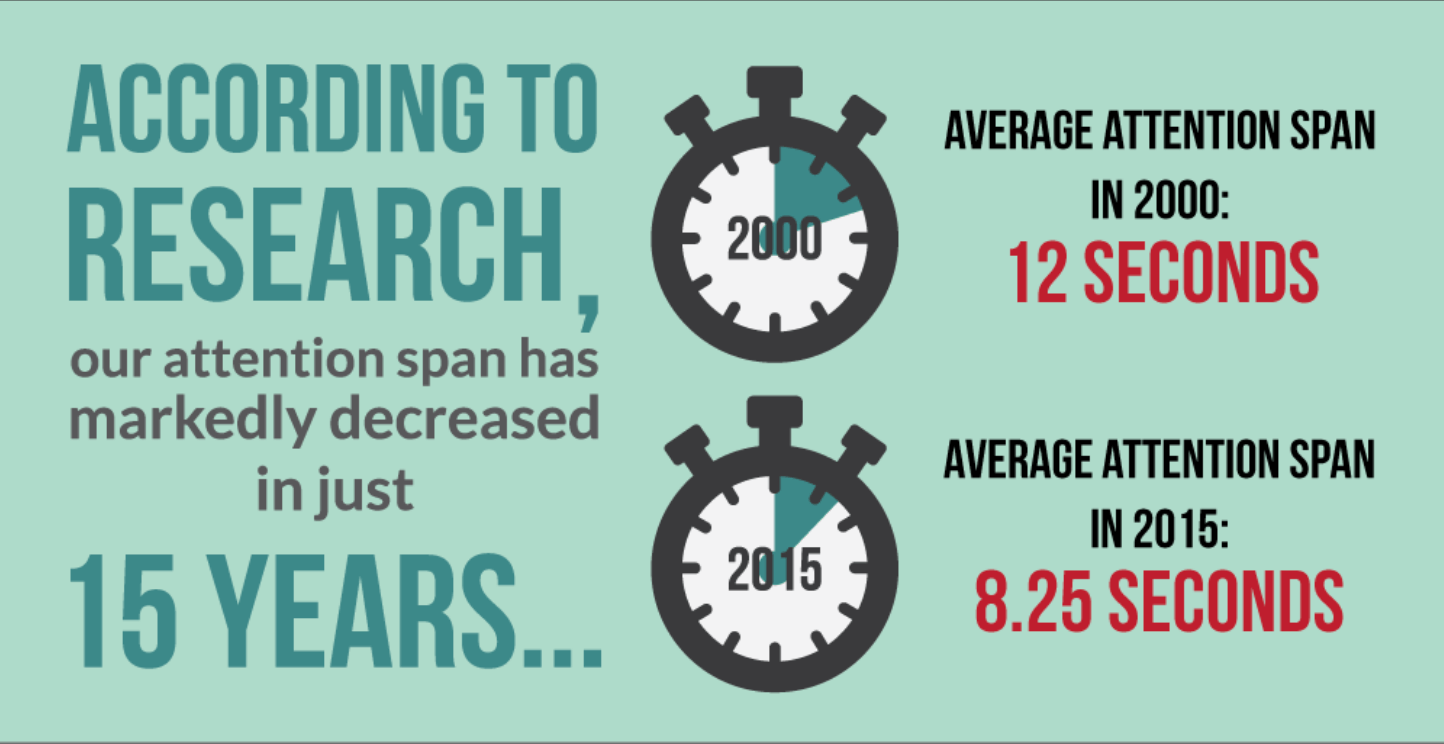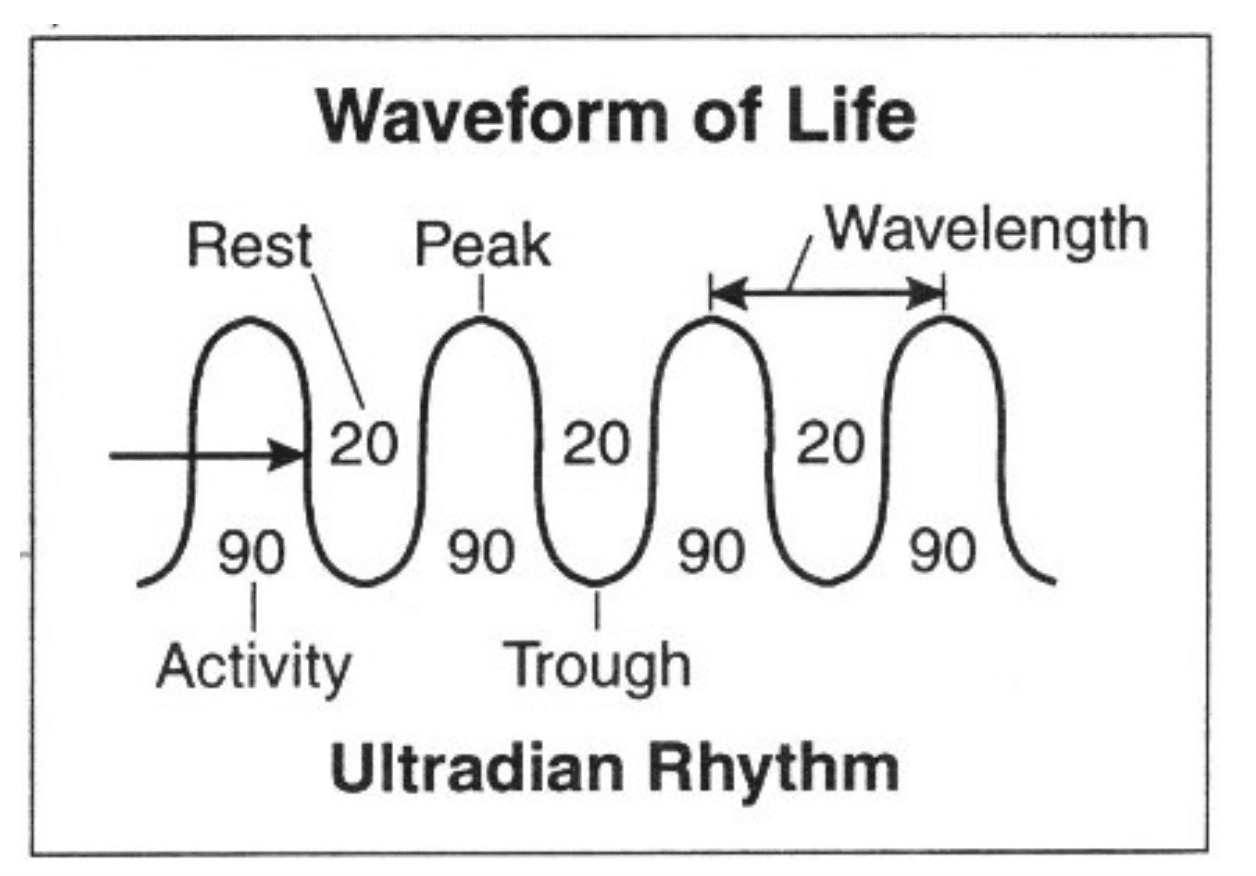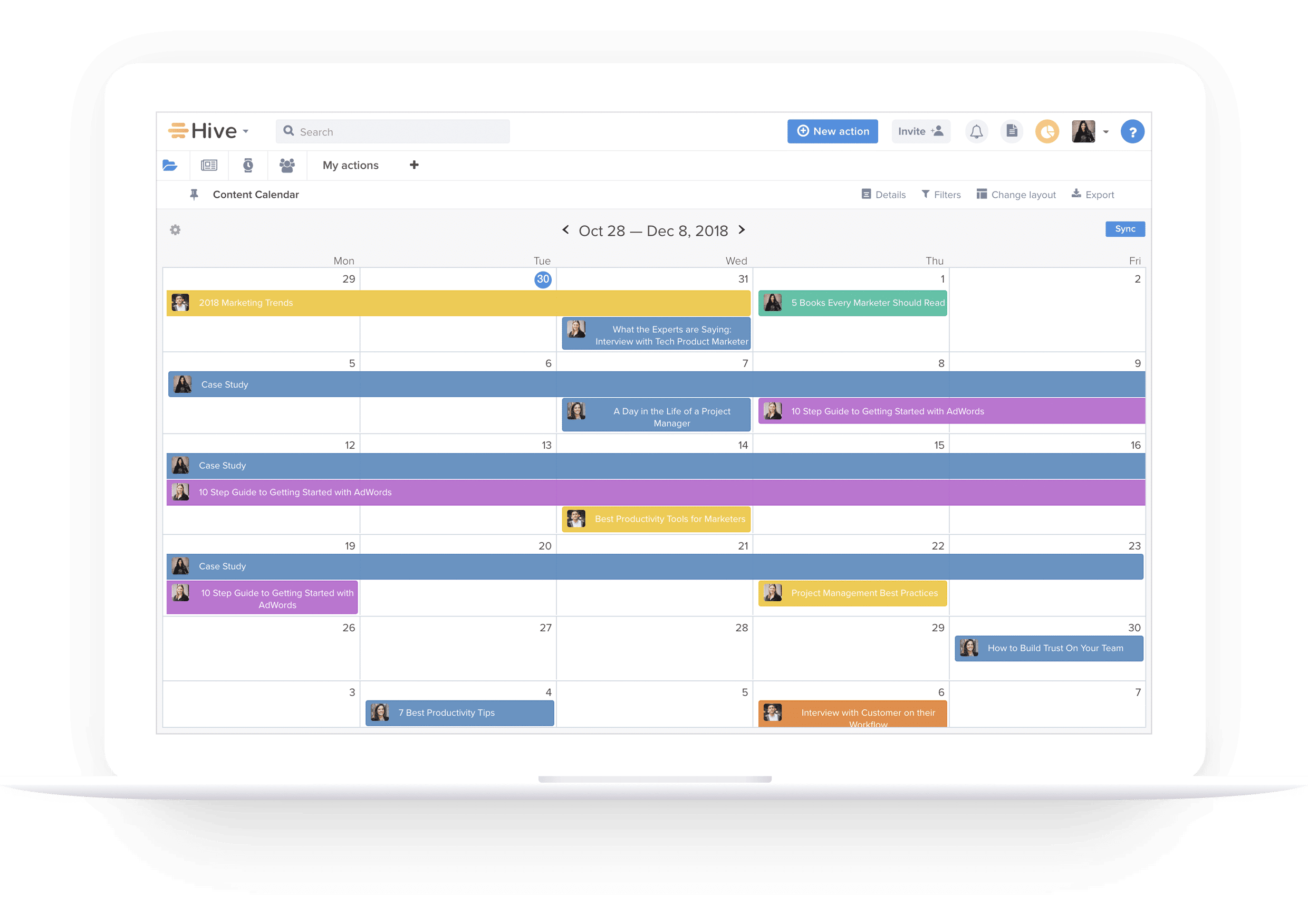Hive is the project and process management tool behind some of the most productive teams in the world. Learn about how we can help your team here.
Humans aren’t meant to focus for long periods of time. The brain is a complex thing, constantly taking in stimuli — it’s been estimated that we take in 11 million bits of information per second from the environment — so it makes sense that our attention span, or amount of time that we can focus on one specific activity, isn’t too long.
There’s a lot of research on “attention span,” some of which posits that our attention span is actually shorter than that of a goldfish, at around 8.25 seconds. It’s important to note that attention span is defined as “the amount of time an individual can remain focused on a task without becoming distracted.” We can obviously focus on a task for more than 8.25 seconds at a time, but that is the estimate for how long our brain will think only about that task, without other competing thoughts fighting for attention.

The craziest part of it all is that our attention span has been slowly decreasing over time. It’s estimated that the rise of smartphones, which brought on constant stimulation and frequent notifications, contributed to our decreasing attention span, which fell 3.75 seconds, from 12 seconds to 8.25, in a 15-year span. Digital Information World puts it best when they said ‘We are constantly bombarded by texts, tweets, push notifications, ads, Facebook posts, emails and more, and our brains get hooked on all that stimuli. We crave more and more new information, and it can be difficult to pay attention to any one thing for very long.” Basically, our brain sees a shiny new thing to focus on, and hops from notification to notification in search of the next best stimuli.
When we’re relaxing after work or school, this short attention span works. We can flit from Netflix to Instagram to Snapchat without any real repercussions. But it’s a totally different story when we’re at work or school. How are we supposed to focus our energies for long periods of time when our brain isn’t programmed to?
Over the last few years, research has come out to support working in 90 minute blocks. Why this specific amount of time? Our brain takes up a lot of energy (obviously) bumping information back and forth between nerve cells and depleting our sodium-potassium ratios. Science has proven that our brain can last for 90 minutes at optimal (high-frequency) levels before losing steam, after which it needs a roughly 20 minute break. This pattern of 90 minutes on, 20 minutes off is based on something called the “Basic Rest-Activity Cycle,” which exists both during sleep and outside of sleep. Riding that cyclical wave, which our body naturally craves, can help our brains operate at peak efficiency.

Realistically, it’s hard to consistently block off 90 minute sections of time. We don’t typically think of activities in those increments, but that’s where apps like Timely come in. By automatically tracking all your work activity, you can analyze your full productive performance (seeing how you divide your time, how long tasks take, where you get distracted and which workflows slow you down). But it also serves as a time blocking scheduler, letting you plan your work into 90-minute blocks and see what you actually end up doing in that time.

Hive is also a great tool to help enhance the time blocking process, as it helps you identify and sort tasks. You can utilize Hive’s calendar view to sort tasks into specific days, which you can then block off further in your calendar, or you can use Hive Analytics to pinpoint which times of the day you are most productive, and block off your biggest tasks for that time. For example, I know my most productive days are Tuesdays at 10 AM, so I’ve taken to scheduling big meetings or time-blocking 90 minutes to work on a big project during that time.
Additionally, there are a few simple things you can do to help sync to your body’s natural rhythm. One of those is stacking meetings accordingly. No one can be at their peak productivity if they’re hopping from meeting to meeting without any time in between. Instead, try scheduling only one or two meetings at a time, and ensure there’s a 15-30 minute break in between to allow your brain to properly refuel. Another option is actually putting 30 minute “brain breaks” in your calendar, which will remind you to take a few minutes off, walk around the block, and let your brain balance out.
Do you have any tactics you utilize for time blocking or daily scheduling for maximum productivity? Does the 90-minute focus period not work for you? Let us know in the comments below.




